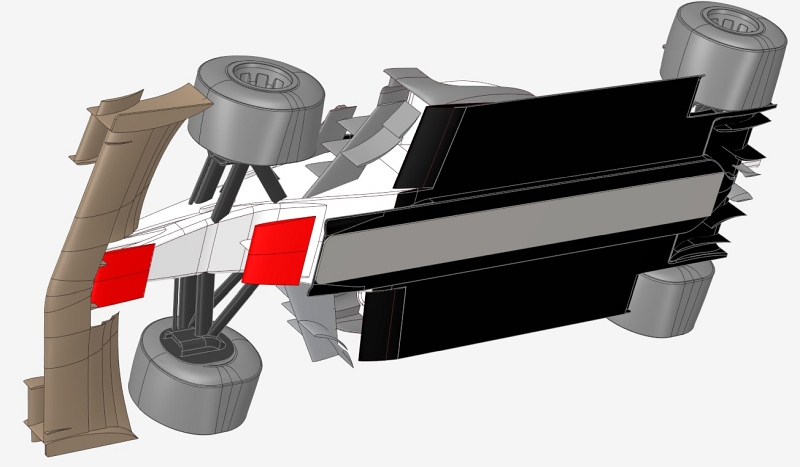etsmc wrote: ↑20 Nov 2019, 09:17
Hope you don't mind me asking but what sort of modifications are you making and for what reason? how do you determine what change needs to be made?
Since I don’t feel that I have posted enough here today /s. Here are ~500 words on my thoughts regarding wings.
The first part is easy, I modify airfoils by either scaling them along y, to make them thicker. Or I add camber by moving the points around. You can do this in more or less systematic ways, I use a polynomial (2nd or 3rd order) to determine how much to translate the different points along y.
The "how to determine" is a bit more complicated (and interesting). I haven't found anything really useful in the litterature when it comes to designing multi element wings. These are my thoughts, backed up only by anecdotal evidence. So strap in this might be a long one

. The short version is, that I try to address what variante(?) wrote earlier: most airfoils are designed to work only on their own, so they probably aren't optimized for use in multi element configurations. Therefore one could presumably add more camber and/or thickness without separation, when you can outsource some of the pressure recovery on the following airfoil.
The longer version.
Usually wings with a more cambered suction-surface produce more suction. Another thing to keep in mind is you want the lowest possible CP on the bottom surface of the most horizontal airfoil. Ideally the following airfoils should then have ever decreasing mininum CP on the suction surface. Therefor I start with a very highly cambered airfoil and follow with airfoils of decreasing camber. If your final airfoil is highly cambered, then the suction created by this airfoil would likely only create drag. So how do I determine whether it needs to be more cambered, well I don’t. I know the “roles” of the different airfoils before the first simulation, and choose airfoils depending on the role.
Additional observations: When you start to run out of space you might find that the highest suction occurs on the first flap, instead of the mainplane. Also, I use only slightly cambered airfoils on the frontwing, otherwise you easily reach 90+ degrees aoa with just a few elements. If you want the tangents to line up. This seems like a bit much to me.

I am not really a fan of using any shape to prescribe the bottom surface of wings, as in the Nick Perrinn/variante method. I think this injects air at an odd angle, that might cause separation. I like to inject air more tangential to trailing edge of the previous airfoil, see below.

This method also doesn’t really take into account that pressure recovery happens most effectively on thin boundary layers. Therefor it would be better to have airfoils that become closer and closer to flat at the trailing edge. This is automatically taken care of when using “imported” airfoils, as pretty much all airfoils already have this shape.
Honestly the main reason why I use imported airfoils as opposed to constructing airfoils from splines like CAEdevice, is that I have found splines in SolidWorks incredibly frustrating to work with. I hope this answers your questions. If any of you found this utterly uninteresting allow me to make it up to you with the following colorful picture of my car from below





 . The short version is, that I try to address what variante(?) wrote earlier: most airfoils are designed to work only on their own, so they probably aren't optimized for use in multi element configurations. Therefore one could presumably add more camber and/or thickness without separation, when you can outsource some of the pressure recovery on the following airfoil.
. The short version is, that I try to address what variante(?) wrote earlier: most airfoils are designed to work only on their own, so they probably aren't optimized for use in multi element configurations. Therefore one could presumably add more camber and/or thickness without separation, when you can outsource some of the pressure recovery on the following airfoil.


